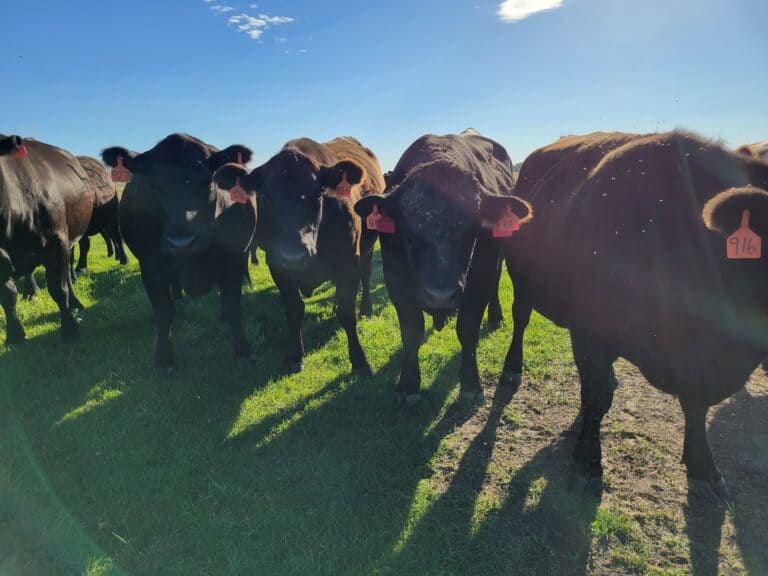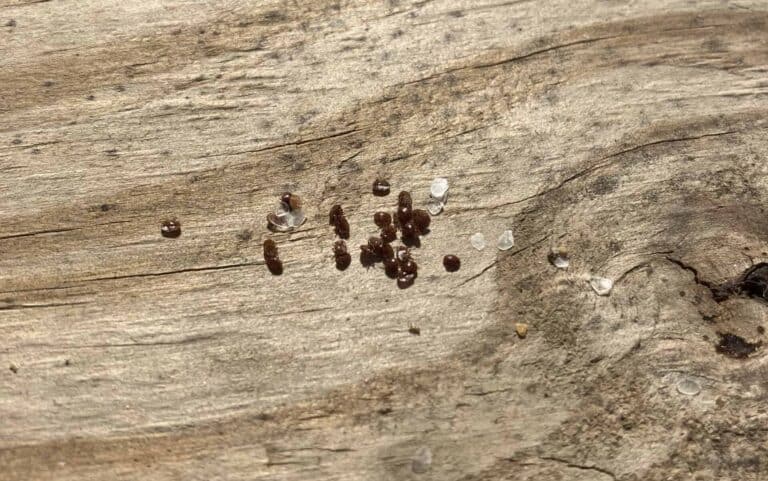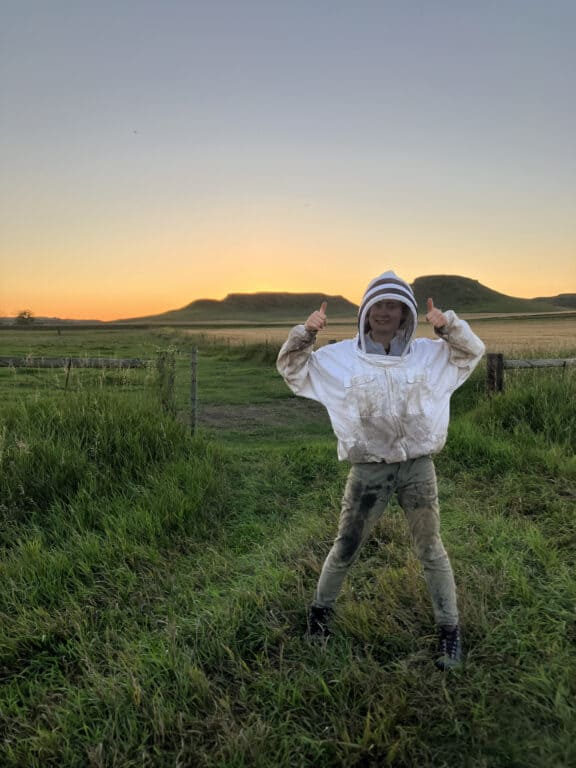As a new field specialist for the South Central region, I have the opportunity to soak up wisdom and advice from beekeepers, their crew, and my fellow BIP field specialists on the Tech Transfer Team (TTT). And you betcha when I say I tried to make myself the largest and most spongy of (Swedish) sponges. I’ve spent the past three months asking questions on everything from disease identification to the math of corn syrup prices, and I have been met with patience, wisdom, and, of course, humor from members of the commercial bee world.
There’s nowhere I learn quite as much as riding in the passenger side of the bee truck. So, hop in with me as I share some of my greatest takeaways from my first three months riding shotgun.
Lesson #1: A good honey flow cures (almost) all
If I had a queen for every time TTT members and beekeepers say “there’s a good flow going, so that [insert disease here] should clear up on its own,” I could start my own successful nuc business. EFB and chalkbrood infections are especially responsive to a good dose of honey flow.
Lesson #2: You can learn a whole lot from the bottom board
I was puzzling over a beekeeper’s Varroa numbers on the drive back to the hotel, when I made the decision to call Dan Wyns, field specialist in the Great Lakes region, for advice. Mites were consistent across untreated and one recently treated yard, and things weren’t checking out. After talking things out for 10 minutes, Dan asked; “Did you check the bottom board for mite fall?” I slapped myself and resolved to always check the bottom board more carefully. I’ve come to learn that a peek at the bottom board can give you a good sense of population size, hygienic behavior, an idea of mite infestation, chalkbrood severity, drone numbers (especially if it’s 3 p.m. – see below) and more. Shining a flashlight over the bottom is especially helpful.

Lesson #3: A little creativity goes a long way
One beekeeper taught me that there is little that can’t be fixed with a trip to Menards. Matt Hoepfinger, field specialist in California, showed me that an alcohol container cut in half works best as a bee scoop. I learned to light a smoker by filling it with wood shavings and torching the outside for an instant, charred-finger-free result. I learned to fill smokers with what Matt elegantly calls “potpourri”, aka anything you can find: a sprinkle of wood shavings, a dash of cow dung, dried spurge, a pinch of burlap. A foreman showed me how to best navigate the ruts and bumps of North Dakota roads. Ben Sallmann, field specialist in the North Central region, taught me the power of a flow mindset and using just the right amount of smoke when moving through colonies.
Lesson #4: Never underestimate the power of the Varroa mite
On one long drive in early August, Kim Guillemette, my co-field specialist in the South Central, and I were comparing methods of doing alcohol washes. Kim casually mentioned that the mites don’t actually die in the alcohol because they can hold their breath. I turned and looked at her like she was crazy (sorry Kim) — alcohol kills invertebrates, and I’d done hundreds of alcohol washes and those things floated around like they were long gone. I needed to see this for myself. Over the next few days, I watched in astonishment as mites that had been sitting in alcohol for 10, 30, and even 60+ minutes picked themselves up out of our sampling sieve and scurried across the truck bed. As I dropped them in a test tube to send away for amitraz resistance testing, they climbed BACK UP out of the tube (and continued to do this each time I pushed them down like the little menaces they are). In case I needed more evidence of what a formidable enemy Varroa are, this was it.

Lesson #5: Drones like to sleep in
I was making myself a fly on the wall during a conversation with two successful queen producers, when one of them mentioned that drones like to fly in the afternoon, specifically at 3 p.m.. Sure enough, a few days later around 3 p.m. we heard the buzz in the air switch from a higher pitch to a lower tone and saw the air was filled with mostly drones. Since then, I’ve begun to call 3 p.m. “drone-a-clock” and keep a special eye out for drone congregation areas.
Lesson #6: Logistics, logistics, logistics
Semi drivers that arrive 3 hours early, bee yards names, crew coordination, treatment timing, colonies spread across state lines, variations in seasonal bloom, pollination contracts — migratory beekeepers have a lot to keep track of! Mobile applications can be helpful, but sometimes you just need to rely on good old paper maps and notes. It’s not enough to evaluate an operation’s success and sustainability based on the individual colony level, or the pallet, or even the yard, but the network of moving parts. Complex systems require complex approaches, and a good notepad.

Lesson #7: It takes a special type of person to run bees
Call me biased, but beekeepers and those that support them are built differently than most. Whether it’s pure passion for honey bees, a propensity for a challenge, respect for hard work, stubbornness, or a combination of all four, something sets them apart. After a particularly long day contending with stacked supers, angry bulls, a face off between mud and our rental SUV, a sore back, and a wake-up call from an electric fence (sorry Anne Marie—I couldn’t help but test it out!), I sat in my hotel room and reflected on what it would be like to work for a commercial operation. Only bee people could wake up at 5 a.m., unload semis all day, coordinate crews and truck arrivals, experience colony losses, contend with Varroa, and still want to talk about bees during lunch and dinner breaks. Love for beekeeping and honey bees is what gets me up every morning to do it all over again, and while I can’t speak for others, I know one thing for certain: commercial beekeepers care about their bees.
Improving the health of commercial honey bees and the long-term prosperity of our industry starts with the people in the bee yards. I encourage everyone to hop up in the truck (whether metaphorically or literally) with humility and open-mindedness. Who knows, you might see me there—but I call shotgun.
If you have any comments, questions or concerns about this blog post or anything else, please contact catherine.crosier@beeinformed.org.

